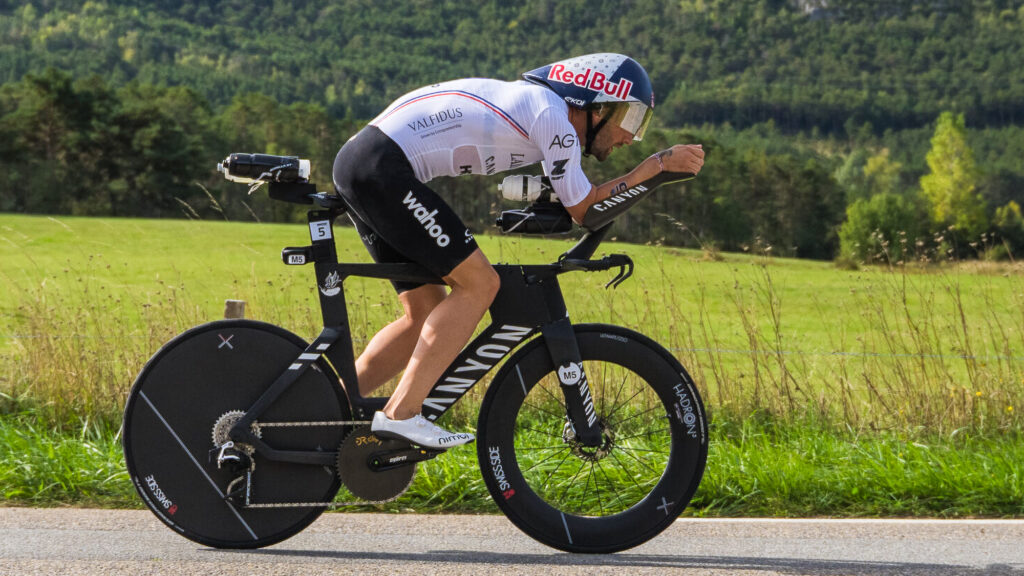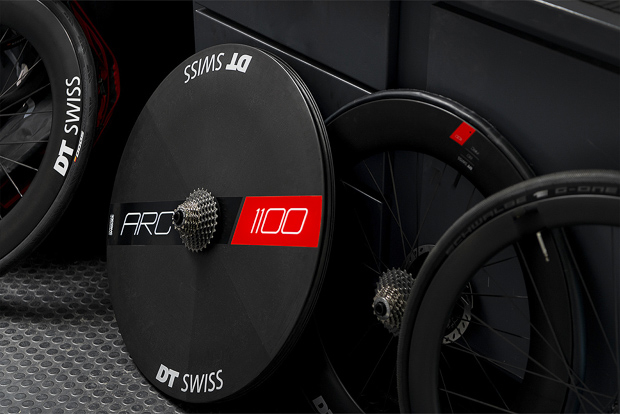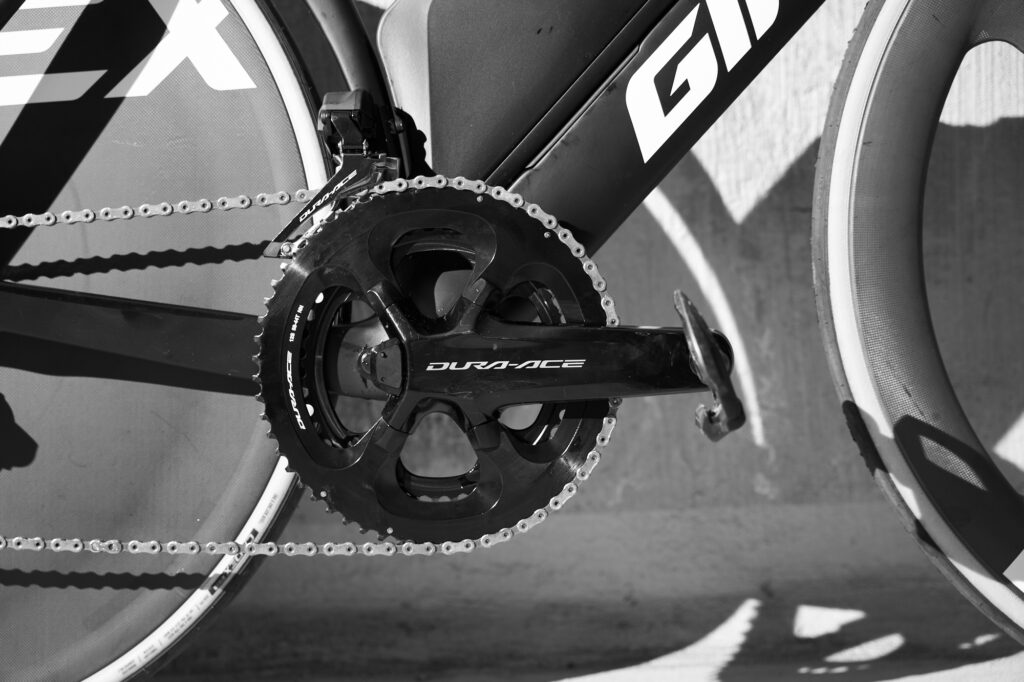Originally published at: More Insights and Trends From the Men’s 2025 IRONMAN World Championship Bike Count - Slowtwitch News
The bike count from the final full distance IRONMAN World Championship in Nice is done and dusted. As we announced earlier in the week, Canyon led the way for the third consecutive count, with more than 20% of the field riding a Canyon bike. That being said, though, we wanted to break down some of these numbers a bit further — and pull out some surprising trends that the numbers alone may not have shown.
On Bikes: Canyon Gobbles Up More Market Share, and QR Makes Inroads in Europe

Canyon crept over the 500 bike threshold this year in Nice, with precisely 20 more bikes being racked versus last year’s Kona. You can almost directly tie that to the decline in bikes that Cervelo saw from last year to this year; there were 33 fewer Cervelo’s in Nice.
Giant had a big year, going from 60 bikes in 2024 to 95 this year. The launch of the next generation Trinity, along with strong at-once availability, seemed to certainly be of benefit. It, of course, was also ridden to great effect by Gustav Iden on his way to a second-place performance. Cube also put up a 60% increase in bikes going from Hawaii to France — it’ll be interesting to monitor these brands counts over the change back to a single-day world championship in Kona.
Perhaps most surprising is the performance of Quintana Roo, which gained a couple of bikes versus Kona 2024. It was not until recently that Quintana Roo offered direct sales within Europe. The recent X-PR, V-PR, and V-PRi bikes were all well represented in the field.
Specialized continues its downward trend in the bike count, having effectively called time-out on its triathlon offerings. You can’t, today, order a complete bike for triathlon racing from Specialized. You can order the extremely long-in-the-tooth Shiv Tri module (complete with rim brakes, no less!) for $4,500, or you can purchase the Shiv TT module for just over $6,000. A far cry from 14 years ago, when it took out ads proclaiming the speeds Craig Alexander used the new Shiv Tri to win that year’s IRONMAN World Championship. Felt, too, continues to trend downward, down 27% year-over-year.
All of the most non-traditional frame shapes saw drops in their counts. CADEX, KU, Ventum, and Dimond all slide in the count. That may be in part due to the course, as 13.35% of the field opted for a road bike for the significant climbing the Nice course contains.
Here, we break down the changes year-over-year from this year’s count compared to last year’s men’s race in Kona.
| Brand | 2025 Count | Change From Kona 2024 |
|---|---|---|
| Canyon | 502 | 4.15% |
| Cervelo | 380 | -7.99% |
| Trek | 347 | 2.97% |
| Specialized | 141 | -18.97% |
| Quintana Roo | 112 | 2.75% |
| Giant | 95 | 58.33% |
| Scott | 83 | 7.79% |
| Argon 18 | 81 | 1.25% |
| BMC | 81 | 1.25% |
| Cube | 77 | 60.42% |
| Felt | 70 | -27.08% |
| Orbea | 37 | 12.12% |
| Pinarello | 28 | 47.37% |
| Factor | 26 | 116.67% |
| Ceepo | 24 | 26.32% |
| Cannondale | 20 | 33.33% |
| Cadex | 19 | -13.64% |
| Dimond | 14 | -12.5% |
| KU | 14 | -39.13% |
| Ventum | 12 | -40% |
| Look | 8 | 166.67% |
| Ridley | 7 | 40% |
| Willier | 6 | -40% |
| Colnago | 5 | no change |
| Airsteem | 4 | 100% |
| Focus | 3 | 300% |
| LIV | 1 | ∞ |
| Parlee | 1 | -80% |
| Guru | 1 | ∞ |
Wheels are Becoming More Regional

In perhaps the biggest shock of the bike count, DT Swiss took the overall top spot in the wheel count. DT Swiss accounted for 505 wheel sets, or roughly 20% of the registered field for the race. It beat out long-time leader in the category Zipp by 95 wheel sets.
I am sure that our Reader Forum, based on our recent discussions on hookless, would point to Zipp’s move to the technology as the primary reasoning. I say not so fast. There’s a fair number of factors in play here. Don’t get me wrong: I am sure that for a few purchasers, hookless may have been a consideration. But considering our recent polling on this issue — where the majority of purchasers don’t have a clue as to whether their wheel set is hooked or hookless — there are other factors likely at play.
1.) DT Swiss has become a stronger OEM player. Canyon, in particular, has featured DT Swiss as an OEM-spec option for multiple years now. Given the brand’s continued dominance in the bike count, it’s unsurprising to see gains in the count.
2.) Tariffs work both ways. Much has been written about how President Trump’s tariffs are impacting imported bike pricing here in the United States. Reciprocal tariffs, however, mean that US products within the Euro zone have also suffered from price increases. Despite the recent agreements that see US products imported to Europe subjected to lower fees as compared to European exports to the US, the pricing dynamic can’t be ignored.
3.) Kona data indicated regional bias. Zipp had 561 wheel sets on the Kona pier last October when the men took to the course. You simply don’t lose 151 wheel sets overnight. If I had to assign percentages to this, I’d put 100 of those athletes who are regionally biased on their purchasing behavior; 30 of those athletes who procured new bikes and bought OEM-spec wheels; and maybe 20 of them who decided hookless was not for them (the Slowtwitch Forum crowd is strongest at this event). Mind you, this is also despite many pro men declaring tire pressures well below 72 PSI (as we’ve seen with both Kristian Blummenfelt and Matthew Marquardt’s pre-race galleries)…but that’s another story for another day.
Other tidbits of note: we counted less than 25% of bikes racked as having a rear disc wheel. Apparently, Cervelo’s memo on always running the disc did not make it to the age group field. And almost 17% of the field were on rim braked wheel sets. That’s a bold strategy, Cotton, on this bike course…
Shimano Has Won The Groupset War

For a long time, it looked like SRAM was going to make in-roads on components. At the very least, SRAM’s mechanical gear-shifting outclassed Shimano’s by a wide margin. In my opinion, the greatest mechanical triathlon groupset was SRAM Force 10-speed with the TT900 shifter. But I digress.
SRAM has solidly captured about 30% of the triathlon marketshare. Whether in Nice or in Kona, there’s around 700 to 725 bikes that will have SRAM components on board. It’s not bad. The problem, of course, is that Shimano more than doubles that marketshare — whether in Hawaii or in Nice. There were 1,600 bikes with Shimano in Kona last year. There were 1,600+ bikes in Nice with Shimano drivetrain components this year.
This despite SRAM being first to 12-speed, and being the leader in 1X drivetrains. It’s Shimano’s world, and we’re all just playing in it.
